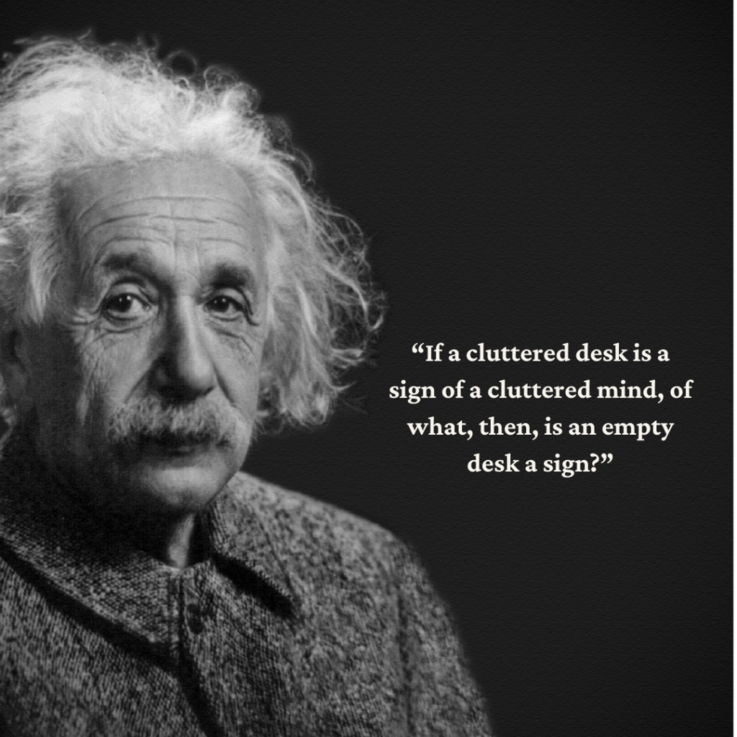Your Table Reveals Your Genius
“If a cluttered desk is a sign of a cluttered mind, of what, then, is an empty desk a sign?”
Albert Einstein
Ralph Morse/Life Pictures/Shutterstock
That’s how Albert Einstein’s desk looked a few hours before he died. Does he have a special reason for it?
The 2013 experiment by Kathleen D. Vohs, and two of her colleagues from the University of Minnesota, explored the relationship between order/disorder and human behaviour.
Smoothie Experiment
In one of their experiments, they arranged their laboratory rooms to look tidy and orderly or messy. Tidy with books and papers stacked in an orderly fashion. Messy with books and papers strewn all around the room.
They invited 188 adults to participate in a “consumer choice study” where the participants were asked to choose between healthy Smoothies in “classic” flavor or “new” flavor.
As the team has predicted, people in the tidy room chose the “classic” smoothie almost twice as often, while the people in the messy room chose the smoothie with the “new” flavor more than twice as often. It shows that people in the tidy room chose convention while the people in the messy room preferred novelty.
Ping-pong Ball Experiment
They conducted a second experiment to validate their premise that messiness sparks creativity and that departure from conventions is key to wit and brilliance.
This time, they invited 48 research participants to again stay in a tidy room and messy room. The participants were told that a Ping-pong ball factory would like to find new applications for their Ping-pong balls. They were asked to write as many ideas as they could think of. Independent judges were asked to rate the ideas based on the degree of creativity. Rated highly creative were using Ping-pong balls as ice cube trays and chair leg protectors. Low in innovation was the use of Ping-pong balls as a party toy. Both groups came up with the same number of ideas, but the ideas from the messy room group were 28% more creative.
Doing the Right Thing
Thirty-four Dutch students were subjected to an experiment to check the effect of an orderly room on generosity and doing the right thing. At the end of the experiment, 82 percent of the students in the orderly room contributed money versus 47 percent from the messy room.
Afterwhich, they were given a choice between an apple or a candy bar. Those from the orderly room chose the healthy snack.
Creativity or Convention
It has always been told, taught, and widely promoted that a clean and orderly environment contributes to better work and greater productivity. A neat and organized environment promotes learning.
In the experiments conducted by Voh’s team, the locations didn’t matter at all. The creation of a mess or order made a significant difference in people’s behaviour.
A messy work environment makes people more creative, breaks conventions, and stimulates people to think out-of-the-box. While an orderly environment encouraged safe and conventional choices.
This experiment does not mean messing up your work area will bring out the genius in you. It is not a magic trick. Remember, you can not give what you do not have.
It merely means that the tidiness or chaos of your work environment affects your behaviour. It transforms a person’s behaviour.
TAKE AWAY
Do you clear up your table before starting work, or do you thrive in messy disarray?
As the experiments revealed, there could be good in the mess. Creativity is an attribute of brilliance.
Work around what you have. What matters is that what you have works well for you. If mess brings out the genius in you, let it be.
Just remember to keep the mess within your work area.
Do you wonder about the state of Mark Zuckerberg’s desk?
« Back